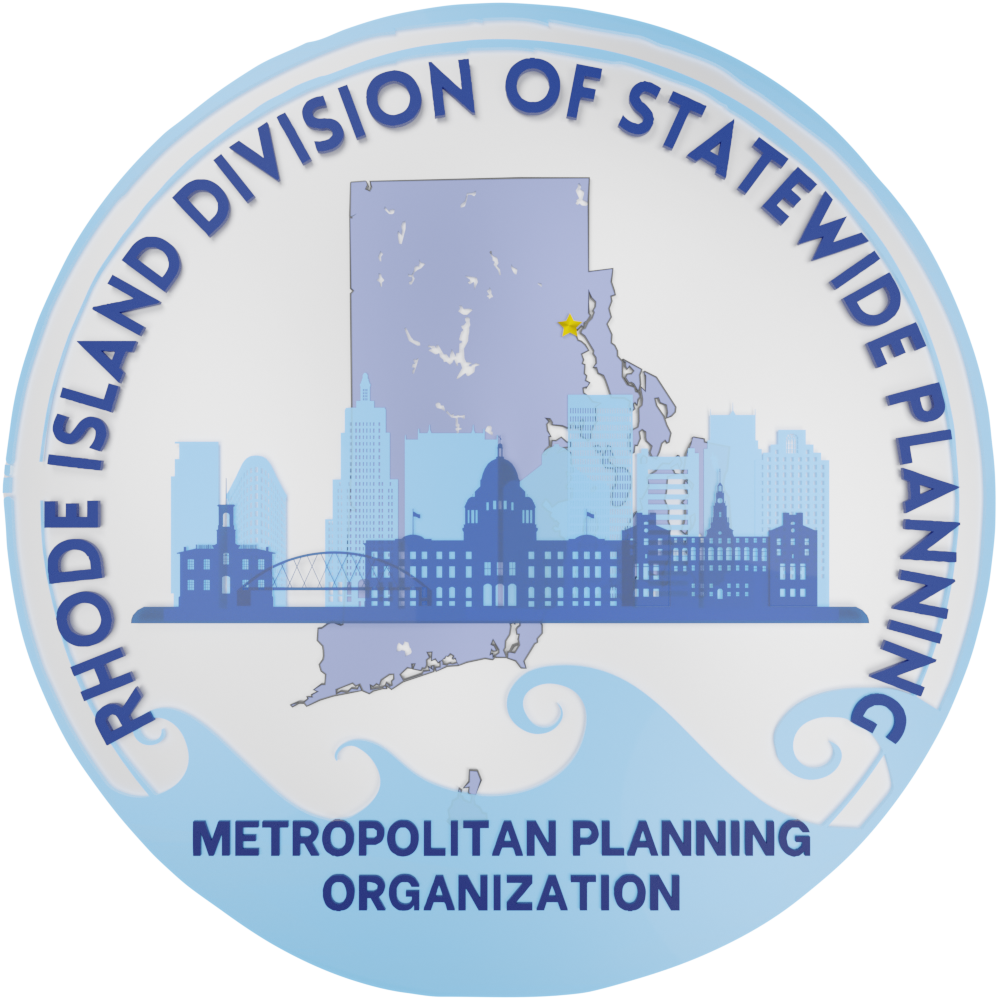State Guide Plan
The State Guide Plan is Rhode Island’s centralized and integrated long-range planning document. The State Guide Plan is not a single document but a collection of plans that have been adopted over many years. It comprises many separately published elements covering a range of topics.
The State Guide Plan was established by the Rhode Island General Law 42-11-10, which states:
"....the people of this state have a fundamental interest in the orderly development of the state; the state has a positive interest and demonstrated need for establishment of a comprehensive strategic state planning process and the preparation, maintenance, and implementation of plans for the physical, economic, and social, development of the state.... The state guide plan shall be comprised of functional elements or plans dealing with land use; physical development and environmental concerns; economic development; human services; and other factors…The state guide plan shall be a means for centralizing and integrating long-range goals, policies, and plans."
The State Guide Plan provides a degree of continuity and permanent policy direction for the state’s future development. The State Planning Council is responsible for approval of all elements of the State Guide Plan.
The State Guide Plan currently contains 18 elements that can be grouped into functional areas. The list below contains each plan’s date of adoption, the date of the most recent amendment, and its designated element number.
How is the State Guide Plan Used?
The State Guide Plan has four functions. It sets long-range policy (generally 20 years), provides a means to evaluate and coordinate projects or proposals of state importance, sets standards for local comprehensive plans, and serves as a general background information source on various topics.
At its most ambitious, the State Guide Plan establishes broad goals for the state’s future and sets proactive policy positions. Individual State Guide Plan elements provide objectives and strategies that advance implementation for these positions. The creation, adoption, and maintenance of State Guide Plan elements provides unique opportunities for all state entities and their constituencies to be involved in setting these policy positions. This process seeks to ensure that issues have been thoroughly researched, options have been evaluated, and policies are consistent with other plans.
The State Guide Plan provides standards by which specific projects or proposals are evaluated for consistency with state goals, objectives, and policies. This review function is used in a variety of contexts. Some involve only state agencies while others involve the interaction of federal or local entities with the state. Items that are evaluated for consistency with the State Guide Plan include:
- Direct federal projects within the state
- Proposals requesting federal funds
- Applications for U.S. Army Corps of Engineers permits
- Environmental Impact Statements
- Economic Development Corporation projects
- Projects being reviewed by the Energy Facility Siting Board
- Applications for various loans, grants, or other funding coming from state financing
- Property leases and conveyances proposed before the State Properties Committee
The Comprehensive Planning and Land Use Regulation Act, enacted in 1988 and amended in 2011, requires every Rhode Island city and town to adopt a Comprehensive Plan. Each local Comprehensive Plan is required to be consistent with the State Guide Plan. The State Guide Plan serves both as a guidance document to municipalities as they formulate their individual Comprehensive Plans and subsequently as one of the standards by which the State reviews the local plans.
Current State Guide Plan Elements
Ocean State Accelerates (2023)
Presents goals, policies, and strategies for the continuous enhancement of the economy. Profiles the state’s economy using key indicators.
Energy 2035, Rhode Island State Energy Plan
Sets goals and makes recommendations for meeting future energy requirements in light of the state’s economic development, transportation, and environmental needs.
Protecting Our Legacy of Buildings, Places, and Culture: An Historic Preservation Plan for Rhode Island (October 2021) - Element 210
The Historic Preservation State Guide Plan focuses on plans and programs for the preservation of historic sites and structures in Rhode Island. It provides guidance for municipalities and state agencies through goals, objectives, strategies, and policies for preservation.
Rhode Island Five Year Strategic Housing Plan (2010) – Element 423
Quantifies housing needs, identifies implementation strategies to address these needs, and provides guidelines for higher density residential development.
State Housing Plan (March 2000) – Element 421
Establishes housing goals and policies. It also analyzes major housing problems in Rhode Island and makes recommendations for action.
Land Use 2025: Rhode Island's State Land Use Policies and Plan (April 13, 2006) – Element 121
Sets forth a statewide land use policy with a 20-year time horizon. It covers topics such as general land development, economic development, housing, energy, transportation, water resources, and recreation and open space. An Executive Summary is also available for this publication.
Forest Resources Management Plan (March 10, 2005) – Element 161
Establishes a vision, goals, and policies and provides recommendations focused on the management of tree resources to advance the effectiveness of public and private stewardship of the state’s tree and forest resources.
Urban and Community Forestry Plan (May 13, 1999) – Element 156
Establishes a vision, goal, and policies and provides recommendations focused on the management of tree resources within the built environment. Provides guidance for local stewardship of tree resources to advance a healthy, sustainable economy and environment.
Ocean State Outdoors: Rhode Island's Comprehensive Outdoor Recreation Plan (2019) – Element 152
Sets policies and action agendas for providing priority recreation needs while protecting the state’s resource base. Assesses the status of issues and needs in recreation resources, land preservation, and resource protection.
A Greener Path: Greenspace and Greenways for Rhode Island's Future (Nov. 10, 1994) – Element 155
Sets forth policies and program initiatives to create a system of state and local greenspaces and greenways, including natural corridors, trails, and bikeways. Identifies areas that have multiple values as open space (e.g., water resources, wildlife habitat, scenic landscapes).
Rhode Island Comprehensive Solid Waste Management Plan (May 14, 2015)
Describes existing practices, programs, and activities in all major solid waste management areas. Sets goals, policies, and makes recommendations regarding source reduction, recycling, landfilling, management of special wastes, and financing costs of the system.
State Airport System Plan (September 15, 2011) – Element 640
Establishes goals, objectives, policies, and strategies for the development and management of the State’s airports. It includes an overview of system needs through the year 2021.
Moving Forward Rhode Island 2040, Long Range Transportation Plan (LRTP) (December 10, 2020) - Element 611
Provides a long-range framework, goals, policies, and recommendations for the movement of both goods and people. It encompasses the highway system, public transit, transportation system management, bicycle travel, pedestrian, intermodal, and regional transportation needs. Components of the LRTP include the Bicycle Mobility Plan, Congestion Management Plan, and Transit Master Plan.
Rhode Island State Rail Plan 2014 - Element 661
The State Rail Plan addresses Rhode Island’s passenger and freight rail transportation needs over the next twenty years. It describes the state’s existing rail systems, assesses future needs, and includes prioritized short and long-term investment programs.
Rhode Island Waterborne Passenger Transportation Plan (August 1998) - Element 651
Analyzes the potential for expanded use of Rhode Island's waters for passenger transportation and makes recommendations for long-range development of water transportation services and facilities.
Rhode Island Water 2030 (June 14, 2012) – Element 721
Examines issues connected to drinking water including availability, demand, management, and protection, as well as the operation and maintenance of water systems Establishes goals, policies, and actions to maintain existing and protecting future water supplies.
Water Quality 2035, RI Water Quality Management Plan (October 13, 2016)
Establishes goals, policies, and actions for the protection and restoration of all of the State’s water resources, both fresh and salt water. It serves as the nonpoint source management programs required by the United States Environmental Protection Agency and the National Oceanic and Atmospheric Administration.
Plans as Sources of Information
State Guide Plan elements also play a role as an informal but important information resource. A significant amount of background research usually forms the basis of the plan, and often plans present a considerable amount of data, factual findings, problem identification and analysis of various courses of action that then lead to recommending certain policies and actions.

